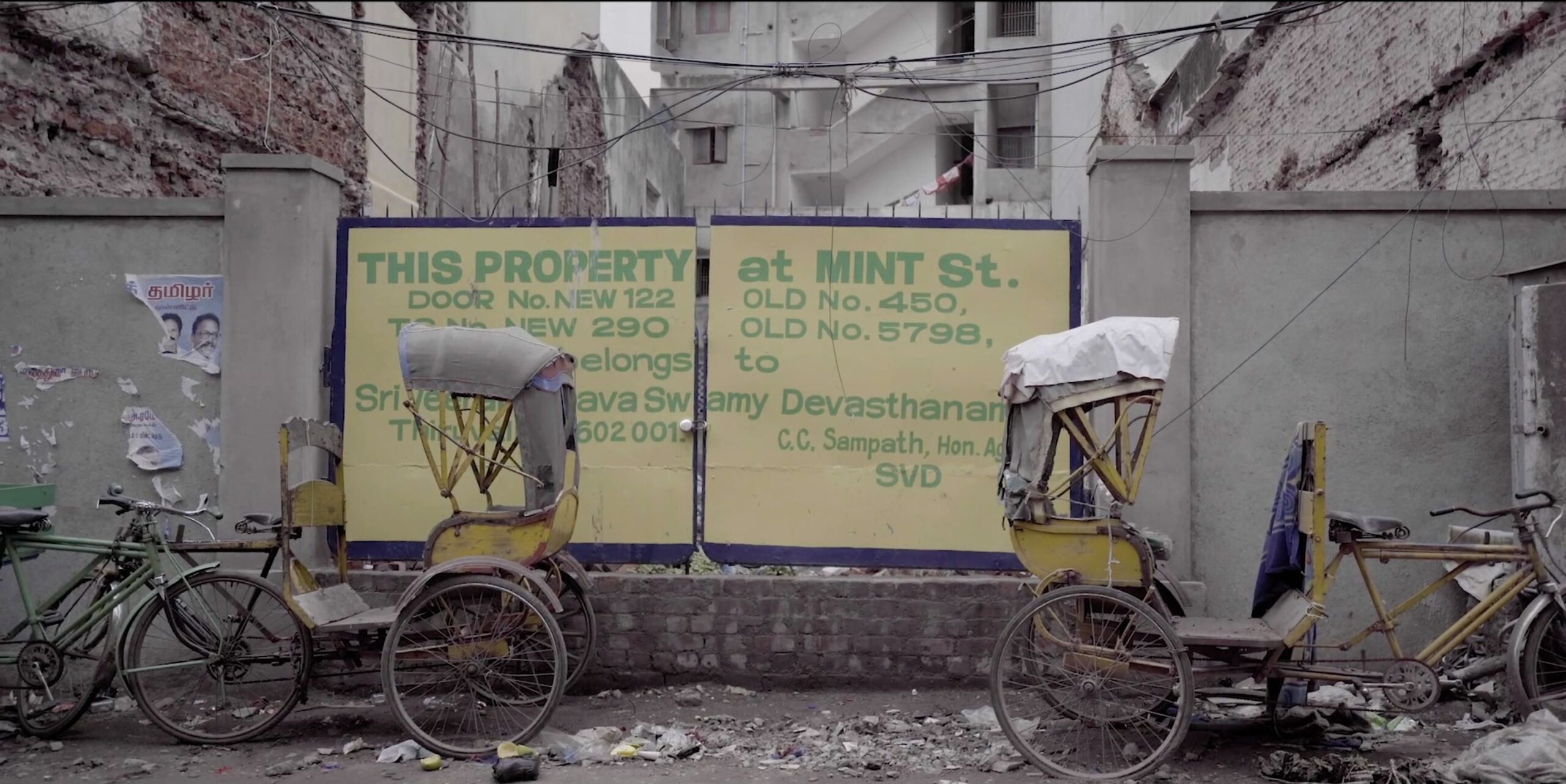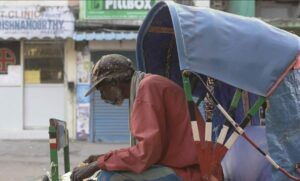Director-writer Ashwin Guru's 29-minute documentary chronicles the fading identity of the city's cycle rickshaw riders.

The number of cycle rickshaws in the city have plummeted. (Ashwin Guru)
As the sun rises over the labyrinthine streets of Chennai, a resilient community teeters on the brink of obscurity, uncertain of the challenges that lie ahead. They are bound not only to the rhythmic hum of wheels on tarred roads, but also intricately woven into the tapestry of Chennai’s very existence.
These are the cycle rickshaw riders, who were once the heart and soul of the metropolis. In his latest award-winning documentary, Sawaari, writer-director Ashwin Guru takes us on a ride like no other, shining a poignant spotlight on their lives.
The motivation? A heartfelt journey down memory lane, during a time when the world seemed to have hit pause, he says. In a chat with South First, the creative unravels tales of their struggle, hope, and human spirit.
Q. What inspired you to create the documentary Sawaari?
A. To be honest, I didn’t think of this topic until our lives hit a pause due to Covid. Covid gave me a chance to ponder over my childhood, which led me to think about cycle rickshaws.

Ashwin Guru won the Best Director Award at the Madras Independent Film Festival for ‘Sawaari’. (Supplied)
I hadn’t seen many cycle rickshaws on the roads, which made me dig more into this. It concluded with the fact that they were soon to be extinct.
During my primary school days, I used to go to school in a cycle rickshaw. Murugan, my rickshaw anna, was short, slim, and with super curly hair that intrigued me quite a bit.
I enjoyed our conversations; it was mostly about Deepavali and crackers. I used to ask him, “Anna, unga area la enna vechanga?” (What crackers did they burst in your neighbourhood?) And he would patiently answer with a smile.
I loved my cycle rickshaw rides from school because they gave me some time to relax before starting my homework. Back then, I never fully grasped that a human had to put in so much physical effort to move the vehicle forward.
Now that I realise all of it, my respect for any kind of physical labour has skyrocketed.
Q. How long did it take to complete the documentary?
A. It took almost three years. We started filming it after the first wave of Covid, but before we could finish half of the documentary, the second wave hit. Then, the third. We shot in between the Covid waves.
Q. Can you share some of the resources or individuals who helped you gain a deeper understanding of the experiences of rickshaw riders in Chennai?
A. More than books, I felt interacting with people would open my mind to more questions and ideas.
There is no better teacher than experience, so I wanted to listen to it as much as possible. I want to convey my gratitude to Thirupurasundari Sevvel of Nam Veedu, Nam Oor, Nam Kadhai, novelist Karan Karki, and historian Sriram Venkatakrishnan for their intellectual insights on the topic.
They were kind enough to chalk out the time and help us out.

Q. Was there a moment during filming that shaped the direction of the documentary?
A. There is no single experience; they were all eye-opening in several ways. I realised that the extent of struggle and poverty that exists is beyond what we know or see in movies.
If I have to pick a story that affected me, it’s when one of the rickshaw anna’s told me that to curb their hunger, they usually tie a wet cloth around their stomach. To see such a scene in movies is one thing, but to hear about it from a person who goes through it is heart-wrenching.
Q. The lives of rickshaw riders have often been overlooked. Did anything you encounter change your perception of their struggles?
A. I knew that the number of cycle rickshaws in the city had plummeted, but not to this extent. Their livelihoods are worse than one can imagine, and they struggle to make ends meet.
It’s difficult to see all of that. I was also taken aback by how alcohol played a major role in their lives.
Q. What are some of the significant social and economic factors that have influenced their livelihoods?

The number of cycle rickshaws in the city has plummeted. (Ashwin Guru)
A. Evolution and progression don’t seem to be a boon for all. Bigger and better vehicles provide comfort and accessibility, and it makes sense for people to use them.
Cycle rickshaws are slow and human-powered, preferred only when necessary, like on narrow roads, now only found in some parts of the city like Sowcarpet.
As a result, rickshaw riders don’t make adequate money at all. These are the main factors that determine their livelihoods.
Q. How did you gain the trust and cooperation of the rickshaw riders in Chennai during the making of Sawaari?
A. The cycle rickshaw annas were more than friendly and shared their stories without any inhibition. The challenge I faced was that they would keep changing their parking spots, as they sleep in the rickshaws or on the platform. It was difficult for me to find the same person again.

The documentary was shot after the first wave of Covid-19. (Ashwin Guru)
Q. Can you tell us about the team that has been part of the creation of the documentary?
A. We are a small team. We regularly work together on commercial projects as well, and that’s how we met. I am lucky that we were all on the same page for the documentary’s ideation and shooting. The team consists of cinematographer Alexander Vedachalam and Anita Kamaraj, voice-over artist.
Q. After completing Sawaari, what kind of response or feedback have you received from audiences?
A. The documentary has won us awards globally and nationally, including Best Director at the Madras Independent Film Festival, Best Short Documentary at the Vesuvius International Film Festival, the Bronze award at the Tokyo Film Award, and the Special Jury Award at the Indo-French International Film Festival, among others.
We have just released it to the public, and we have no idea how it will pan out. It’s premature to say how it will help; we do have some goals in mind, but fingers crossed.
Q. How do you envision the documentary contributing to positive change for rickshaw riders?
A. Cycle rickshaws, apart from being a mode of transportation, play a major role in our heritage and culture. So it’s important to preserve them. They can be made a part of the cultural experiences at government properties like museums.
As a part of curated tourism experiences, people from other nationalities too can ride on rickshaws, if promoted well. This will bring in more remuneration to the community. There are so many options that can be executed.
This documentary is a cry for help. If seen by the right people, it will spark the right debates and conversations.
(To join Ashwin on this ride or help the community, visit Instagram @ashwin_guru17)

May 15, 2024

May 15, 2024

May 15, 2024

May 14, 2024

May 13, 2024

May 13, 2024